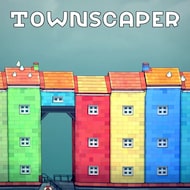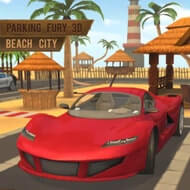IZOWAVE – Build and Defend

IZOWAVE – Build and Defend challenges players to survive against endless waves of hostile forces while carefully constructing and upgrading their base. The experience blends creative building with tactical defense, making each round a constant test of planning and reaction. Instead of focusing only on combat, players must balance resources, structure placement, and upgrades to withstand enemies that grow more powerful with each attack. Every decision shapes how long the base will survive, and no two runs play out the same way.
Building a Base That Lasts
At the heart of IZOWAVE – Build and Defend is the base itself. Players start with only a handful of resources, forcing them to choose wisely between defense and economy. Should you spend early materials on strong walls, or focus first on resource generators for long-term stability? Placement also matters. A poorly positioned tower may leave blind spots, while building too far out can spread defenses too thin.
- Walls: Essential for slowing down enemies, buying time for towers to attack.
- Towers: Provide automatic protection, but cost more resources to maintain and upgrade.
- Resource structures: Critical for sustaining growth, but vulnerable if not defended properly.
Enemies and Escalating Waves
Every wave introduces new pressure. Early rounds test basic defenses, but later ones force adaptability as enemies appear in larger groups with varied strengths. Some move quickly, slipping past weak points, while others are heavily armored and require concentrated firepower. Players must pay attention to patterns and adjust layouts over time. A single oversight, like neglecting a corner of the map, can lead to a chain reaction of breaches.
- Fast units: Exploit gaps in defenses if towers aren’t upgraded.
- Heavy attackers: Focus on breaking through weak structures.
- Mixed waves: Combine different enemy types, requiring flexible defenses.
Player Choices and Strategies
The variety in IZOWAVE – Build and Defend comes from player decision-making. Some prefer to expand their base slowly, investing in long-term resource flow, while others concentrate on compact, heavily fortified layouts. Both approaches can succeed, but each comes with risks. For example, economy-heavy players may collapse under early aggression, while defensive players may lack growth later when waves overwhelm static defenses.
- Compact design: Easier to defend but limits expansion opportunities.
- Spread-out design: Provides more room for structures but requires higher upkeep.
- Hybrid strategy: A balance between resource investment and immediate survival.
Replay Value and Learning Curve
The game thrives on replayability. Each session reveals new insights about placement, timing, and resource allocation. Players who fail a run often come back with refined strategies, learning from past mistakes. Trying different layouts or upgrade priorities makes every attempt unique. The balance between long-term planning and quick reactions ensures that players stay engaged as they push to survive longer waves with each new attempt.
IZOWAVE – Build and Defend is more than just a survival game; it’s a continuous puzzle of balancing creativity and tactical thinking. The mix of building freedom, adaptive challenges, and endless experimentation gives players plenty of reasons to return and improve their strategies each time they play.






































































































































